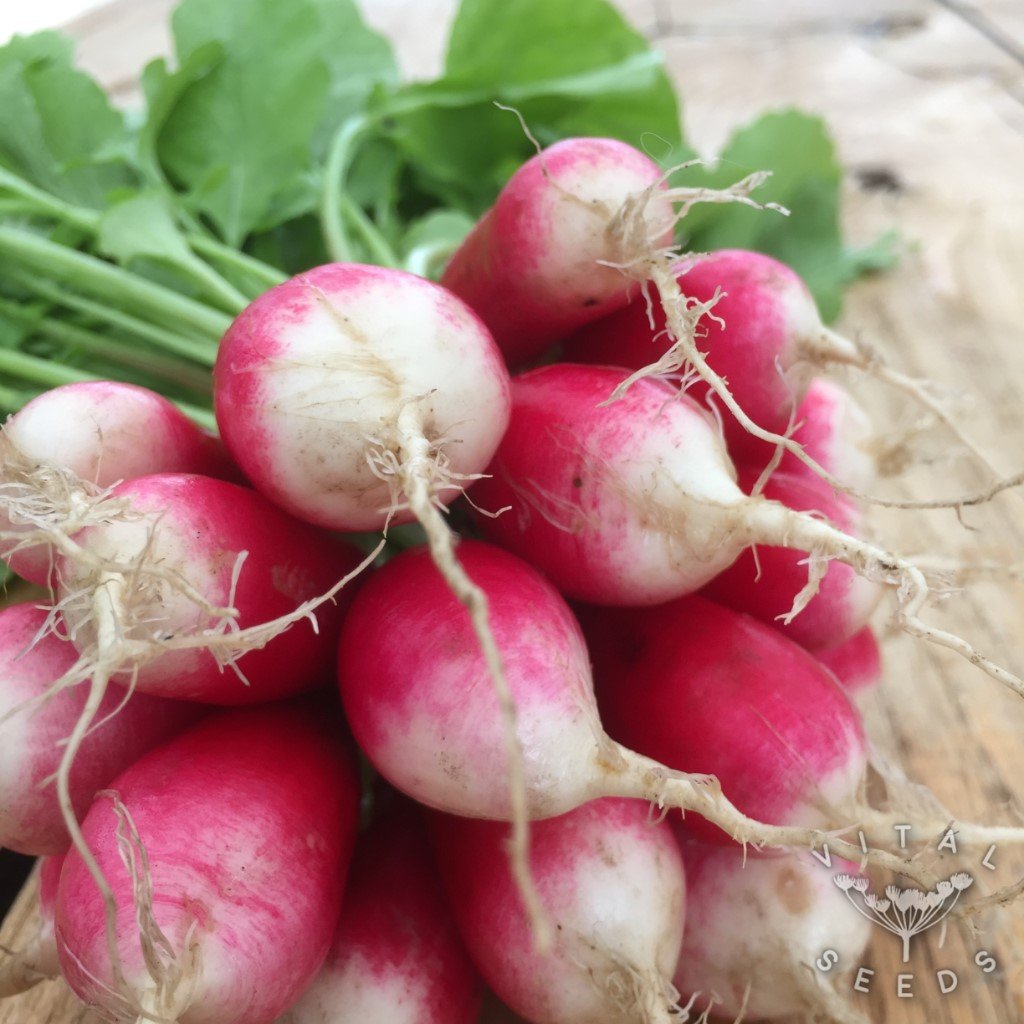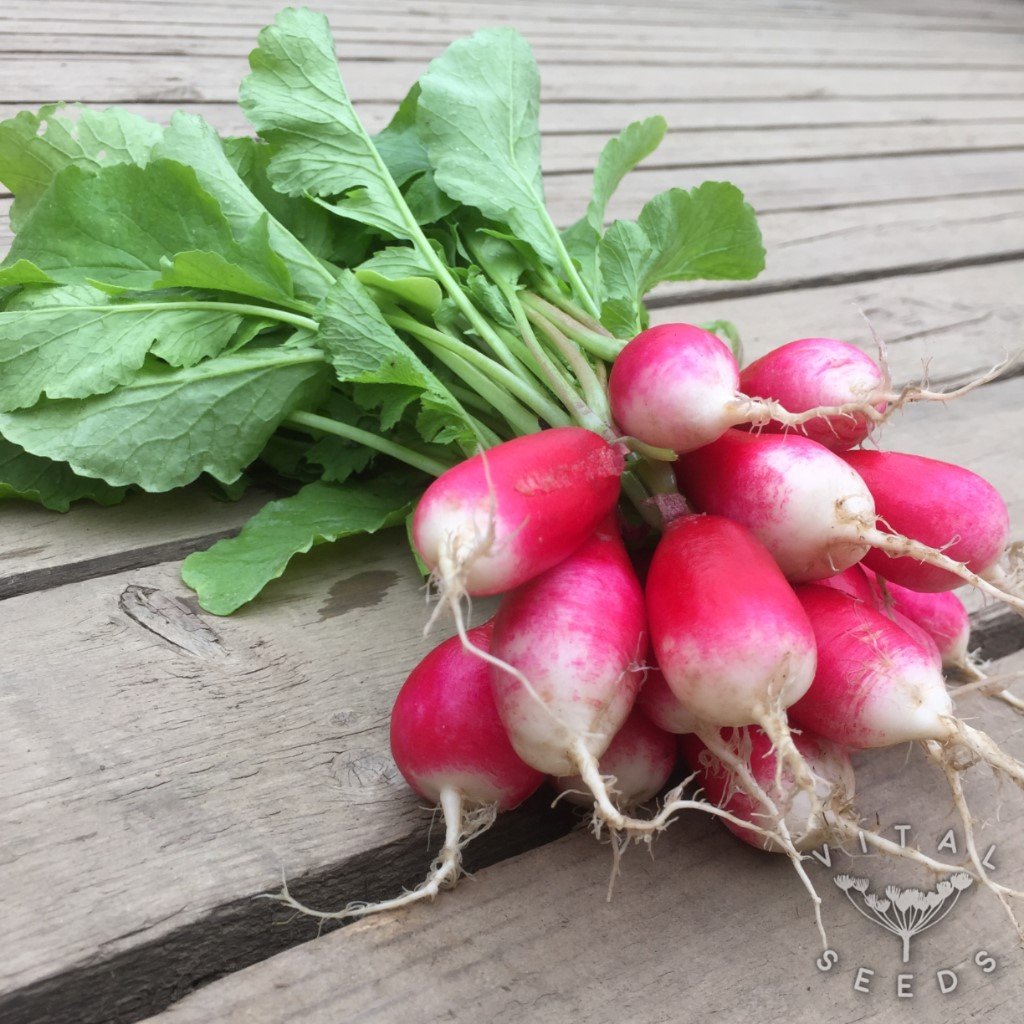Radish – French Breakfast 2 (Organic)
£2.05
Scarlet colour with white tips and a crisp mildly pungent flesh. If you were to eat a radish for breakfast, this would be the one. Cute in looks, sweet and mildly pungent in taste and with a succulent crunch, it makes a tasty healthy snack. Introduced in 1879 it became a seller on the Parisian markets and quickly spread around the world.
Growing it is pure pleasure because they are quick to mature and you can harvest them throughout summer. Best eaten simply, just sliced with some salt on it or mixed in with salad.
(Approximate seed count – 300)

In stock
| Month | J | F | M | A | M | J | J | A | S | O | N | D | ||||||||||||
|---|---|---|---|---|---|---|---|---|---|---|---|---|---|---|---|---|---|---|---|---|---|---|---|---|
| Sow | ||||||||||||||||||||||||
| Plant | ||||||||||||||||||||||||
| Harvest | ||||||||||||||||||||||||
Seed Sowing
Sow your seeds directly from February till August. In milder areas or undercover, sow them till September. Plant seeds 1 cm deep in rows around 15 cm apart, sow seeds every 5 cm, later thinning to 2 cm spacing. Eat the thinned plants; they are small but delicious. Sow every few weeks for regular harvests and to avoid gluts.
Transplanting
Ensure your seed bed is free from weeds. Sheltered sunny sites are best, but they will tolerate some shade and can be grown between taller plants. Plant your seedlings in rows around 15 cm apart; plants should be 2.5 cm apart in the row and water well.
Plant Care
Keep them weed-free and watered during hot spells; lack of water can make them bolt and go woody. Mulch around the plants to keep in moisture and prevent weeds.
Challenges
Protect from slugs and snails, as they like direct-sown seeds. Avoid watering in the evening, as this will encourage overnight slugs and snails. Encourage predators like ground beetles, lizards, slow worms, and, if you’re lucky enough, hedgehogs into your growing space by creating suitable wildlife habitat.
Harvest
From seed, they take around 4-6 weeks to fully grow, but younger plants can be harvested to thin out the rows.
Culinary Ideas
Radish is more often eaten raw in salads but can also be cooked. The French technique to parboil and smother in butter, and then roast with garlic and parsley is also nice. The Koreans ferment a large white radish called daikon to make Kimchi.
Seed Saving
To save seed, you will need to know if it’s an annual or biennial type. If it’s biennial, select your best radish and store it in sand over winter to prevent it from being eaten by pests, then plant it out in the spring. For annual radish, you can leave it in place. Crops will have to be isolated before flowering to prevent cross-pollination. The seeds form in pods; when they turn crisp and brown, they will rattle. That’s the best time to harvest and store in a cool, dry place for up to 4 years.


